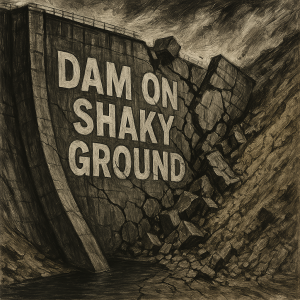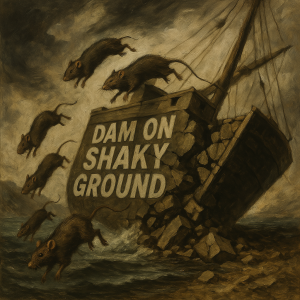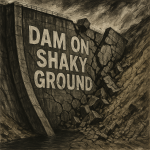The Waimea Irrigation (Community) Dam has both the Tasman District Council and Irrigators begging for a hand out from the Government.

The once claimed “P95” $76 million dam as consulted on with the Tasman District was supposed to have a 95% guarantee of coming on or under budget (according to staff). The later revised budget of $104 million after early contractor engagement was supposed to be “as good as a fixed price dam” according to the Council head of Engineering Richard Kirby. And when queried about the lack of contingency budget Council CFO Mike Drummond assured Council that there was so little of the dam that wasn’t fixed price that the actual contingency figure was more like 30%.
With the dam reaching completion in excess of $200 million, these empty statements and assurances have left the community reeling in the wake of sky rocketing costs. The actual figure of the dam final costs has been well under reported with sunk costs that were supposed to be part of the figure lost along the way. There was originally budgeted for facility for power generation to be added on, also lost along the way. The costs of numerous renegotiation as the price escalated all worn by the rate payer in the form of “overheads” also not part of the announced final figure. Added to that the sky rocketing running costs of the dam leaving a sour taste and increased pressure on rates and water affiliation.
The claimed difficulty in selling extra shares was an issue that was always going to rear its ugly head. The general ratepayers already picked up a number of those extra shares as the initial boast by irrigators was deemed a little unrealistic as some of the land originally included was uphill and would require a new irrigation scheme to give the land owners access to the increased water. Without accounting for the ever increasing pressure for more housing; boosted by Government mandates for Councils to keep supplying available zoned land. The remaining land needing to become involved in the share uptake would require the current owners to change farming practices for it to be affordable even at the originally quoted prices. Perhaps some of the larger shareholders were hoping to buy out all those not participating?

Ironically, a number of the larger shareholders have already sold out, even from those seen laughing and congratulating each other in the video linked in the above article. It makes one wonder if all those stories told during the dam deliberations about generational farming etc were not just more lies and the real aim of the project was just to get their names on a dam?
Unfortunately, for those left trying to farm and live in a region drowning in debt the consequences are a little more dire.
As this goes to print the Tasman District is struggling to recover from two significant weather events in the past fortnight and yet another one potentially looming in the coming week. Unfortunately, a lot of land owners near rivers and water ways have suffered significant damage. The cost of exorbitant rates and water charges leaves little spare for rebuilding flood damage.
The general rate payer fares even worse following the weather events because Tasman District Council in an effort to keep rates affordable in the recent annual plan round had to cut doggy doo bags and halve the amount of road sweeping done. One can only imagine how fixing rivers and roads across the region will fit into rate allocation if they were already scraping the barrel that low. Not to mention the loss of Council owned forestry income (that was supposedly ear marked for dam loan repayments) suffered as a result of windfall during the storms.
Nominations for the next term of Council are due to close in the coming week. Those elected will be on a hiding to nothing as recovery from the Kempthorne, King, Bryant dynasty will take a generation at best. That is assuming we get a change of leadership and direction within Council. Rubber stamping, woke, and agenda driven politics need to be kicked out. If we have any hope of recovery in the Tasman District we will need to return to doing the basics and doing them well. Lets see if the region is ready for change or if we will vote in the final chapter of the District as an independent entity.













